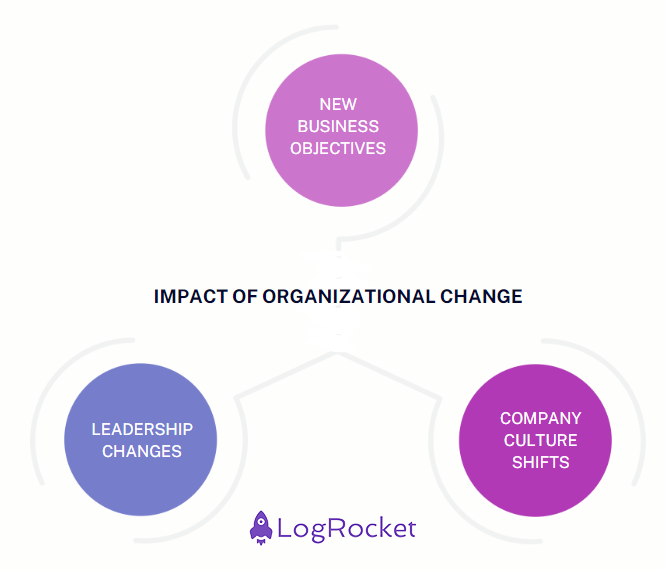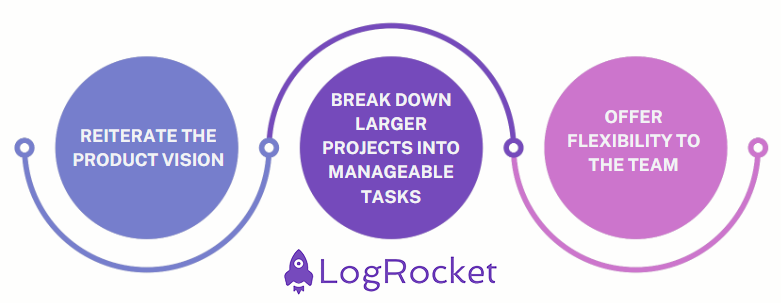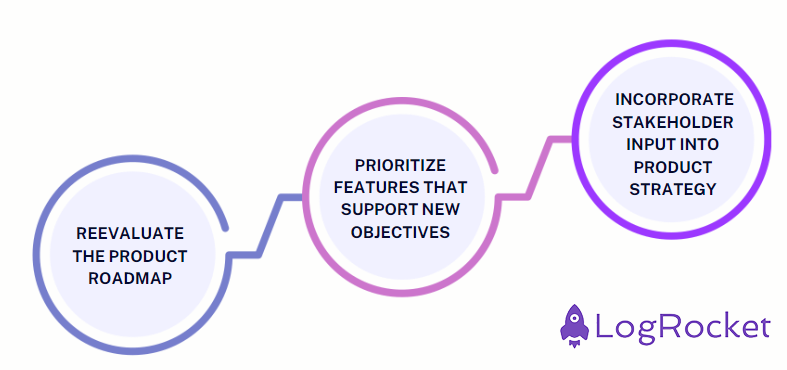Organizational change is inevitable and can be challenging in every form, whether it’s a merger, acquisition, or internal restructuring. Product managers need to learn how to navigate these transitions because these changes can significantly impact the entire team. So how do you maintain focus, adapt to new business goals, and keep your team motivated during times of uncertainty?

In this article, we’ll learn some essential strategies for organizational change management. We will share insights that will help you lead effectively and ensure your product remains on track despite the turbulence.
Organizational change is a common occurrence in product-led companies. It refers to a significant shift in a company’s processes, structure, strategy, or operations. It is often driven by mergers, acquisitions, restructures, or leadership change.
Organizational change management is the process of helping companies or groups through these changes. Organizational change management usually involves due diligence around planning and structured communication.
Product managers need to learn the skill of organizational change management. It is crucial and comes in handy when dealing with shifts in a company’s structure, strategy, or operations. You have to lead the way effectively and guide your team through changes.
Despite the chaos and confusion, you and the team have to maintain focus on the product’s vision. It is of paramount importance to understand the key pillars of organizational change management.
These pillars are key to your approach while dealing with organizational change. Product managers should always adopt a clear, adaptable, and supportive approach. It ensures that the product remains on track and the team adjusts easily to new directions. PMs also have to learn the impact of organizational change in different aspects.
In general, changes can impact and ripple the entire organization via processes, teams, and the overall business direction:

For product managers, organizational change can introduce new challenges. The challenges will require you to carefully strategize, plan, and adapt.
For example:
Product managers must learn to anticipate challenges and adapt quickly. Staying informed and proactive helps you to minimize disruptions. It also ensures that your product continues to meet both user and business needs. During such times, effective communication matters the most.
Most people think of change within a company as having to do with personnel or structure. Though this is common, change can also reflect in the product as well. To keep everyone aligned on common goals and the new path forward, product managers should focus on three main things:
Effective communication is crucial in times of organizational change. A product manager should make extra effort to unite the team and keep stakeholders informed. Keeping the stakeholders engaged helps reduce uncertainty, and also aids in maintaining team morale.
Transparent and consistent communication can make the biggest difference. It is the factor that determines whether the transition is smooth or chaotic.
A few tips to effectively communicate during times of change or uncertainty include:
Open lines of communication and transparency build trust. It keeps the team and stakeholders engaged throughout the transition. The ultimate benefit is reduced confusion and a greater sense of stability. It’s the gateway to establishing or re-establishing product focus when things feel uncertain.
During times of organizational change, regular product team alignment sessions become compulsory. These sessions help everyone maintain a clear focus on product goals and vision, and also lead to a supportive environment.
The goal of having product team alignment sessions are to:

When a product manager gives their team the flexibility to adapt, it empowers them to work with confidence. A proactive approach not only helps maintain momentum but also guides the product evolution. Remember, effective communication is the prerequisite for maintaining product focus.
When organizational objectives shift, it’s crucial to adapt your product strategy with it. The modified strategy should align with these new or adjusted business goals. This process often requires revisiting your roadmap. You might also need to adjust priorities to ensure that your product continues to deliver value:

The product manager is responsible for adapting the product strategy to newer organizational goals. Your team’s efforts should be in sync with the organization’s new direction. This helps the product remain relevant and valuable as the business reshifts focus. The product teams have to make active efforts to maintain momentum.
When you lead your team through periods of uncertainty, you need to lead with a balance of empathy and clarity. It’s important to acknowledge the challenges and concerns your team may have, and based on the raised issues, you should provide clear guidance and direction.
Product managers must regularly check in with team members to understand their needs and offer support. This can be done by providing flexible work arrangements, open discussions, or even collaboration sessions. The transparency about changes reinforces the team’s value and purpose. It also alleviates anxiety and keeps everyone focused.
To tackle an organizational change, you have to understand the impact of change. Secondly, you have to adjust your product strategy. Always lead with empathy so you can guide your team through uncertainty. Empathetic leadership supports product growth and it continues to meet ever-changing business goals.
The following key pointers will prove useful for daily reference:
If you focus on these areas, you can successfully manage change. You will keep your product on track, and both your team and product will thrive during chaotic transitions.

LogRocket identifies friction points in the user experience so you can make informed decisions about product and design changes that must happen to hit your goals.
With LogRocket, you can understand the scope of the issues affecting your product and prioritize the changes that need to be made. LogRocket simplifies workflows by allowing Engineering, Product, UX, and Design teams to work from the same data as you, eliminating any confusion about what needs to be done.
Get your teams on the same page — try LogRocket today.

Most teams fail at autonomy. Learn how clear rules help product teams move faster without micromanagement.

A practical framework for PMs to use AI in ideation without sacrificing judgment, strategy, or decision quality.

A practical five minute revenue estimation method to help product managers compare ideas, drop low impact features, and prioritize smarter.

A practical guide for PMs who want to stop being bottlenecks, delegate smarter, and lead teams effectively with a clear ownership framework.